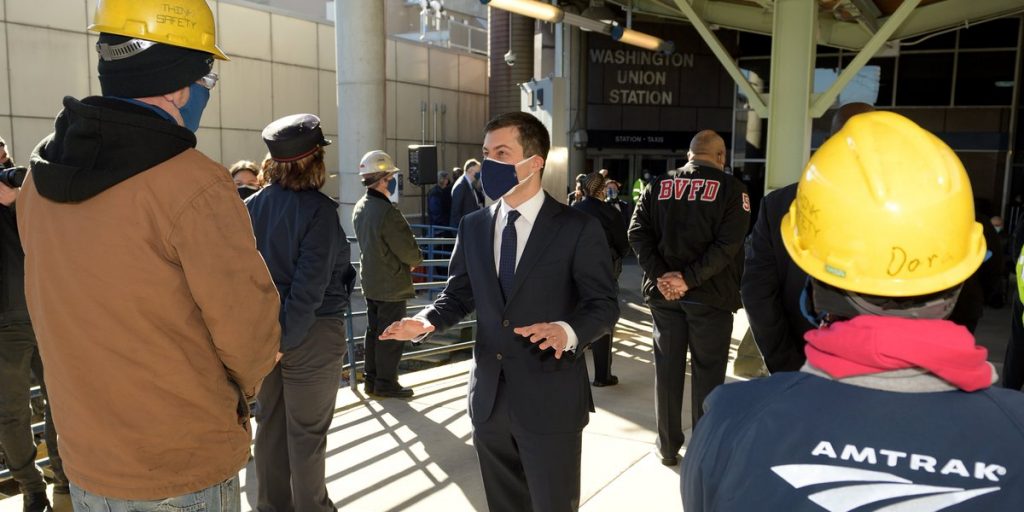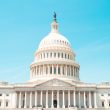Buttigieg: With infrastructure bill signed, ‘the real work begins’ on transportation needs
Traffic fatalities across the United States spiked last year, increasing by a little more than 7 percent over the 36,096 roadway deaths recorded in 2019, according to data from the National Highway Traffic Safety Administration. This year, fatalities are rising at an even steeper rate.
A report released by the traffic safety administration at the end of October documents “the largest six-month increase ever recorded in the Fatality Analysis Reporting System’s history. An estimated 20,160 people died in motor vehicle crashes in the first half of 2021, up 18.4 percent over 2020. That’s the largest number of projected fatalities in that time period since 2006,” reads a statement about the findings.
Included in the Biden Administration’s $1.2 trillion bipartisan infrastructure bill is $100 billion set aside for transportation-related projects distributed through competitive grants via the U.S. Department of Transportation—investments that Transportation Secretary Pete Buttigieg hopes will curb the rising number of highway-related deaths. Notably, this funding includes $5 billion for the Safe Streets and Roads for All program, a new initiative that’s set to provide highway safety grants to areas that need them most.
With the bill signed into law by Pres. Joe Biden last week, “The real work begins. We‘re really going to be looking to you to deliver on the investment,” said Buttigieg, while speaking at the National League of City’s annual City Summit last week, which was hosted in a virtual format this year. “The priorities are many and they are urgent—improving and expanding access to transit for communities that need it most,” spurring economic development, hardening infrastructure against climate change and repairing crumbling roads and bridges.
“Make sure you have vision, and that vision needs to be informed by on-the-ground listening. I’m not telling you anything you don’t already know … but cities and communities need to be very intentional about hearing from folks who might not consider themselves to be transportation wonks, who may not be accustomed to be inviting to the table but are those who are most likely to be disproportionately killed or injured on our roadways,” Buttigieg said. “Make sure there are mechanisms—and they could be low tech mechanisms—ways to get those kinds of voices into the picture.”
Addressing a question posed by Elaine Clegg, president of Boise, Idaho’s city council about whether or not funding grants will favor large metro areas over small communities, Buttigieg said the Department of Transportation will be equally available to everyone and the process will be user friendly across the board. Smaller communities will not be priced out of competitive grants.
The primary role of his agency in distributing the funds, according to Buttigieg, will be to support local leaders meet their goals.
“Let us know what works,” he continued. “While of course we’re going to bring considerable research to bear on these problems, we also know that answers come from the bottom up.”
As communities across the nation prepare for the anticipated funding that’s poised to flow down the federal pipeline, identifying roadways that should need to be made safer for constituents will be an important part of that process—and one that mayors, council members and administrators are the most prepared to tackle.
“You know where the greatest needs are,” said Buttigieg to those in attendance. “You know where the bridges are, the roads are that need work. You know where the transit deserts are in urban and rural communities alike, you know here the threats to safety exist in our traffic systems—you know we have something to do about that, like never before.”
Next, it’ll be up to administrators to connect with constituents and prepare them for potentially long-term construction delays and ensuring equitable distribution. In his experience, Buttigieg, who served as mayor of South Bend, Indiana from 2012 to 2020, said transportation is an area where you see people shift in their perspectives “from sceptics to converts.”
Once a plan has been developed for how to spend the money, Buttigieg encouraged local administrators to “stick to your guns, hold on to the sides of the raft, because so often on the other side of it, people understand what you were trying to do and will support you. Then you’ll get a lot more running room to try something else ambitious based on that success.”




















